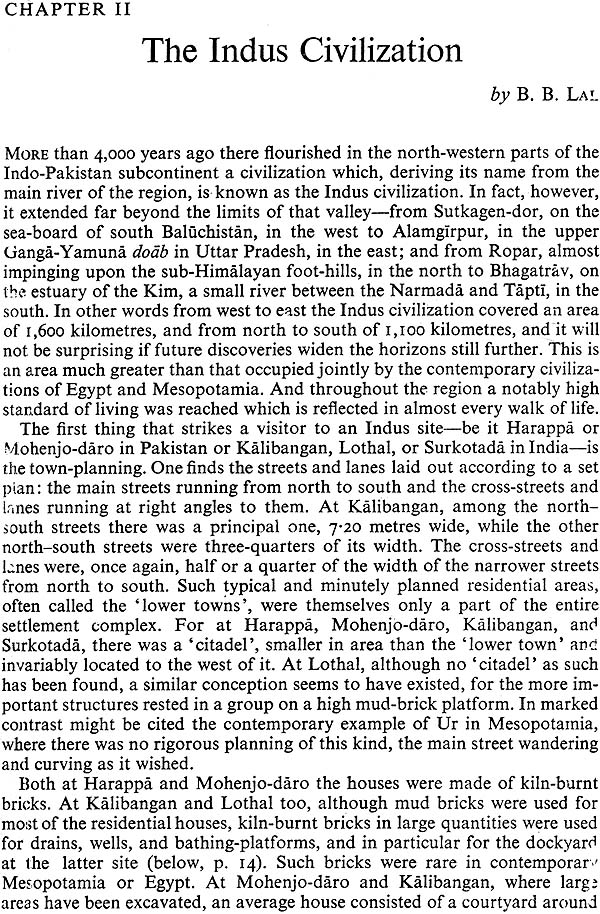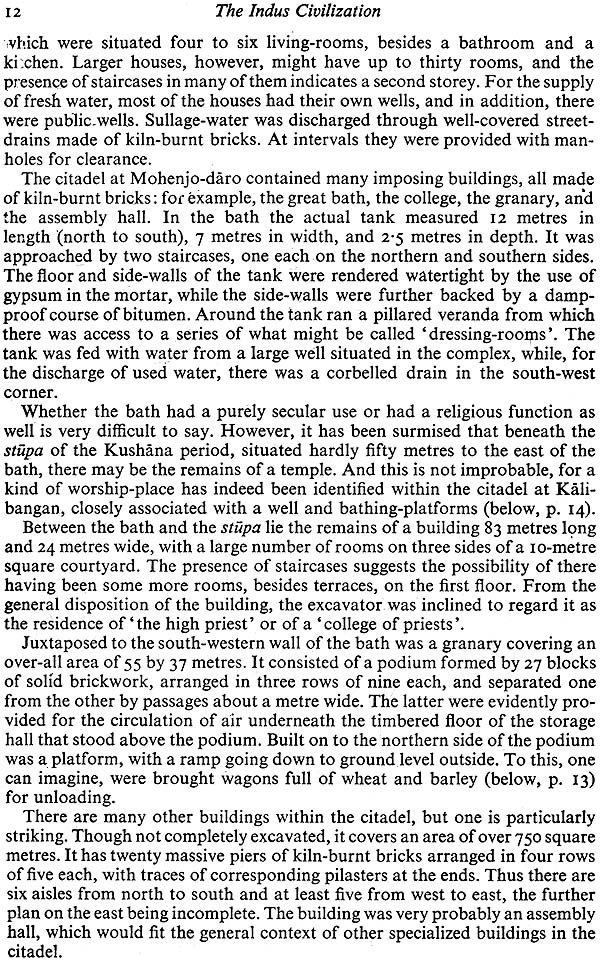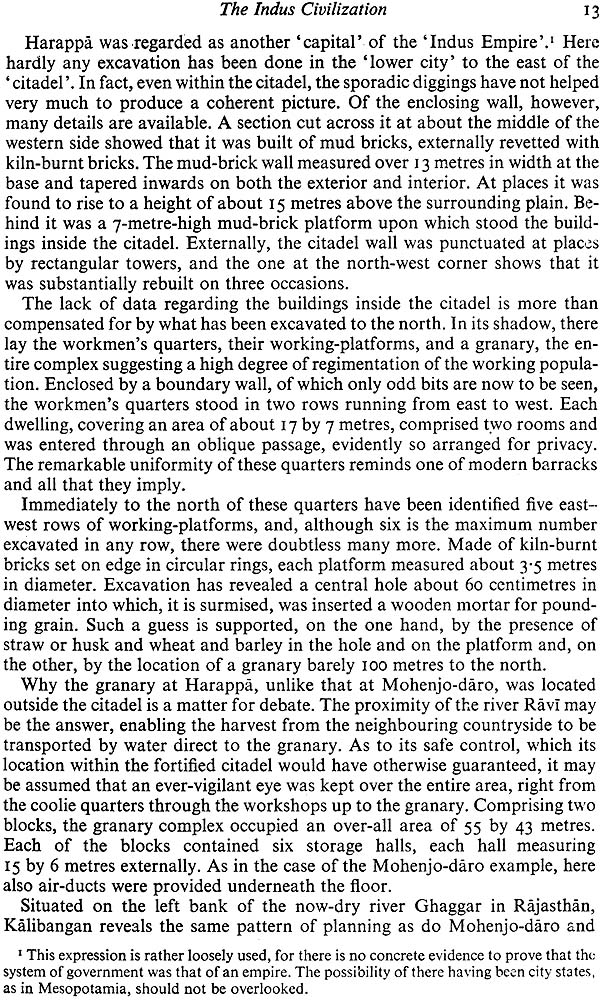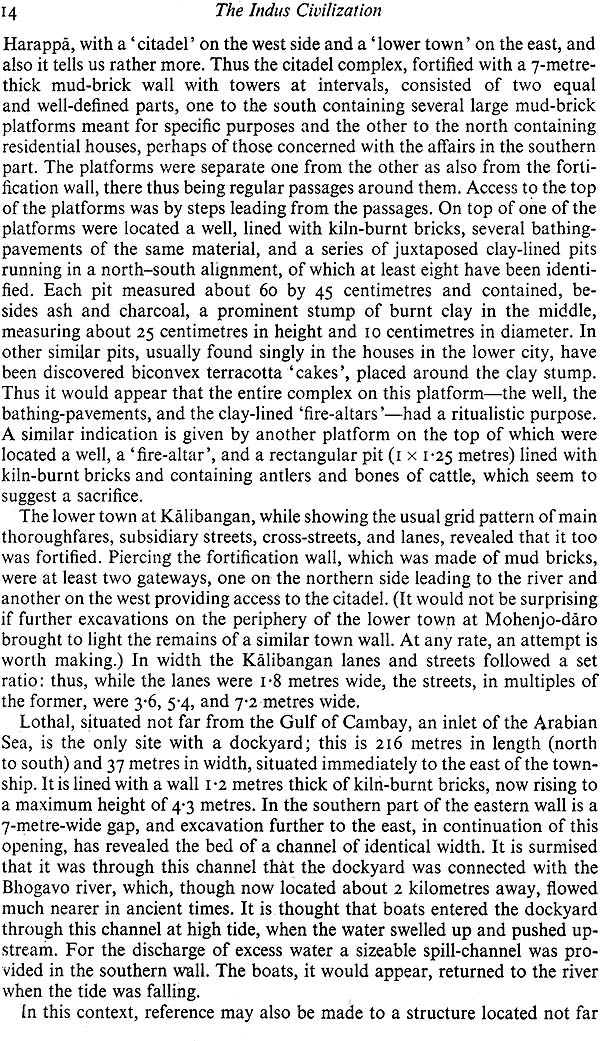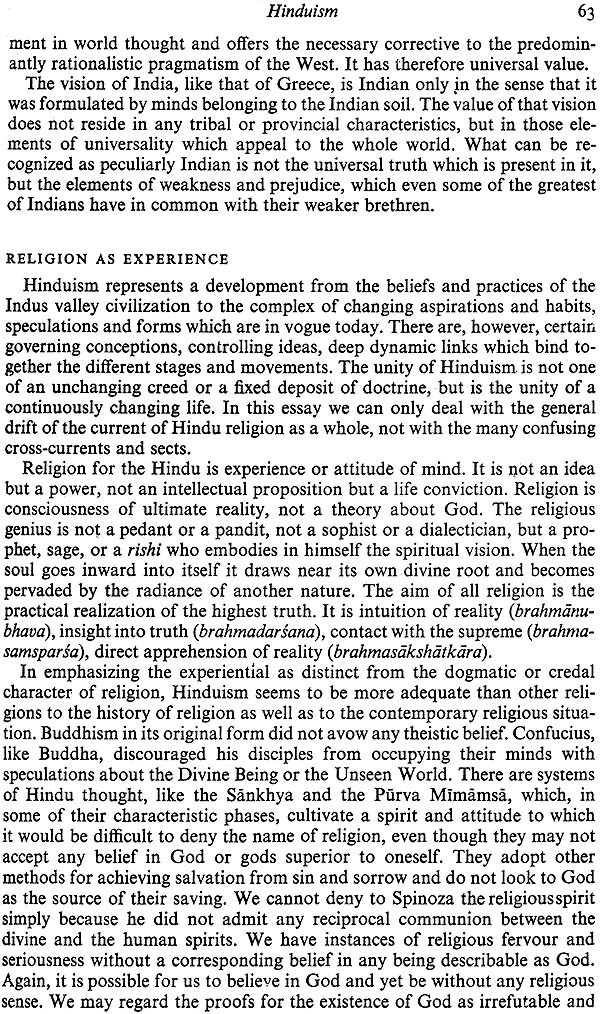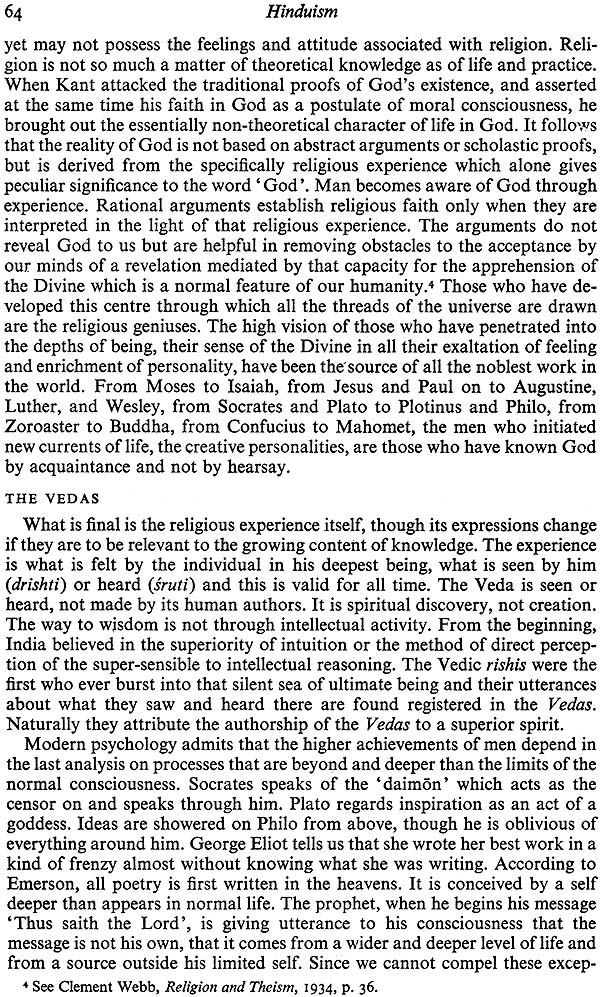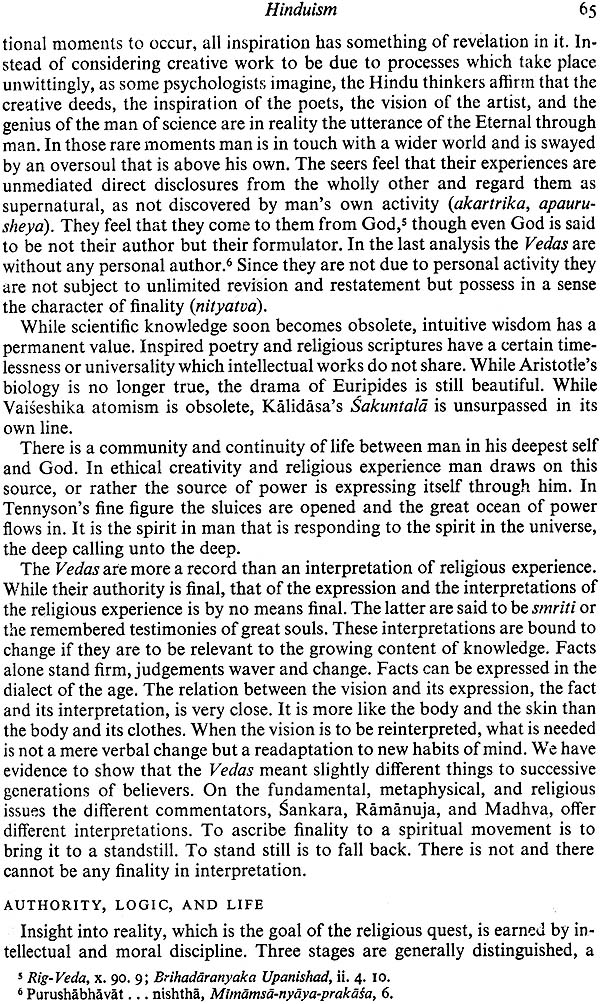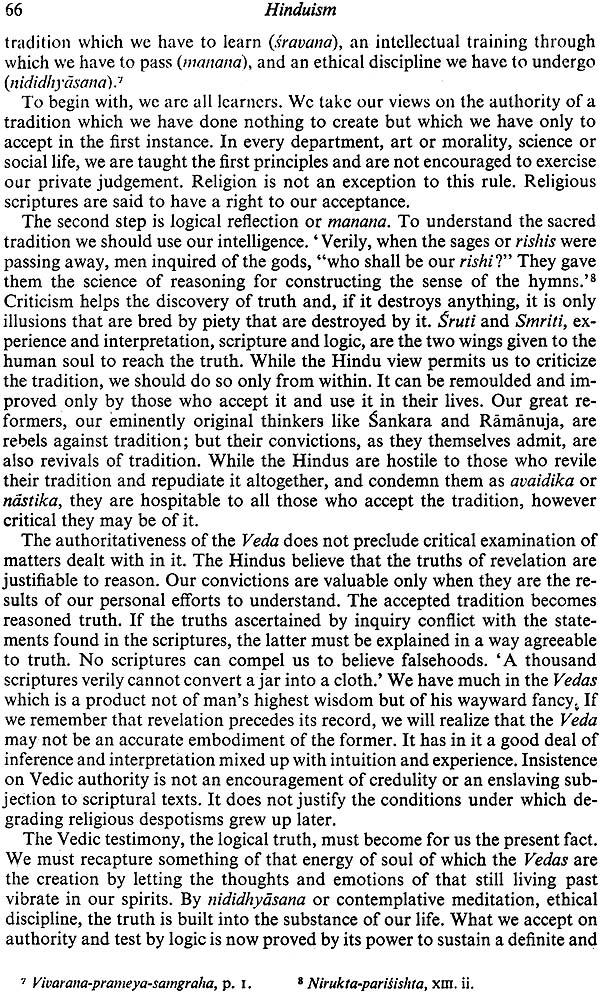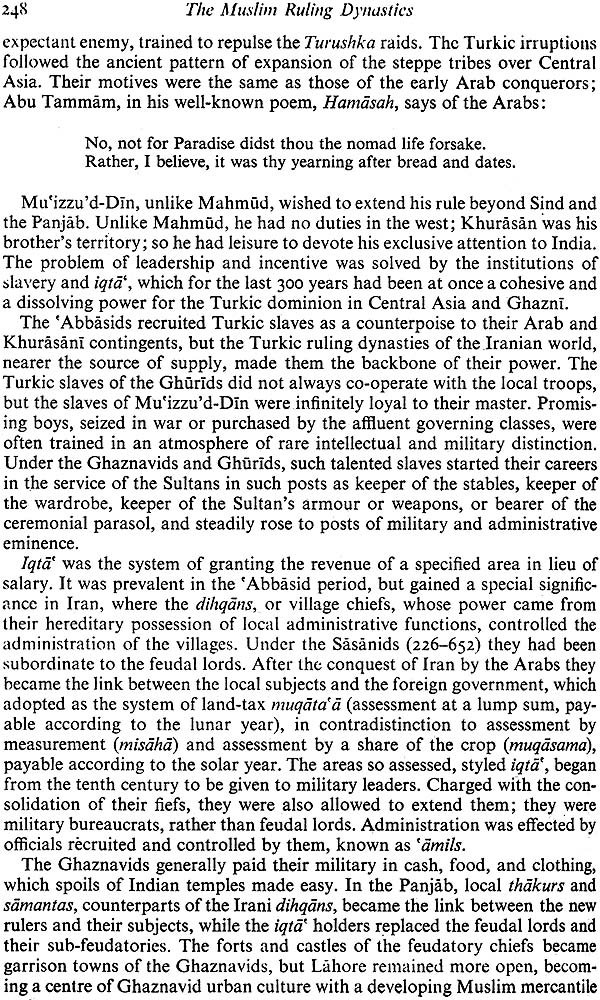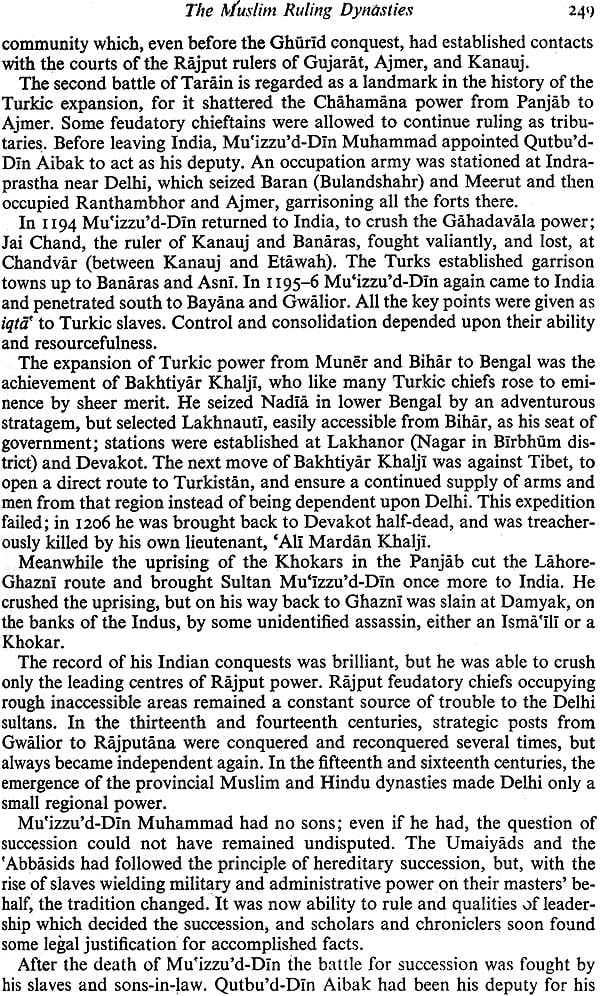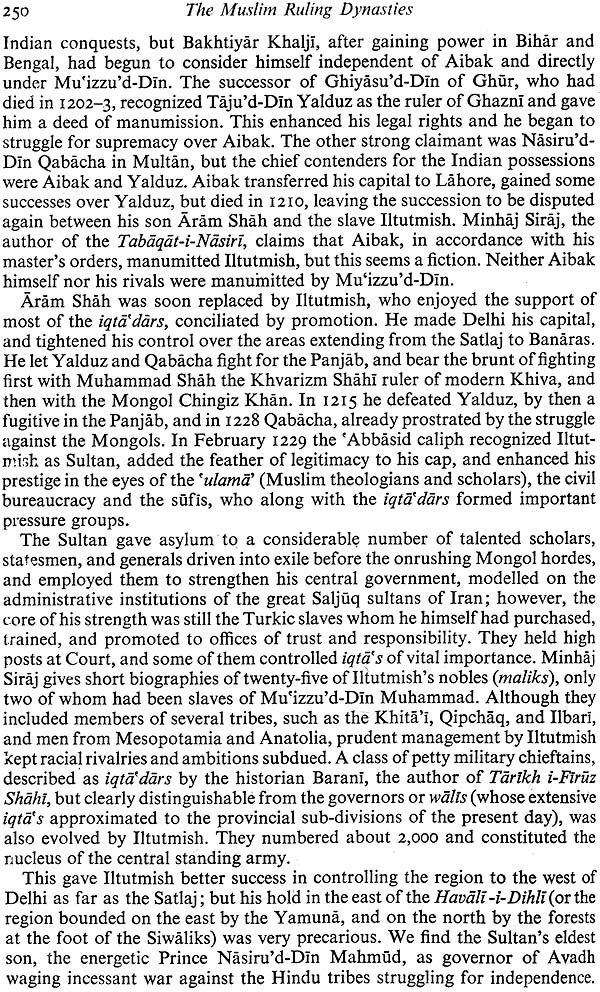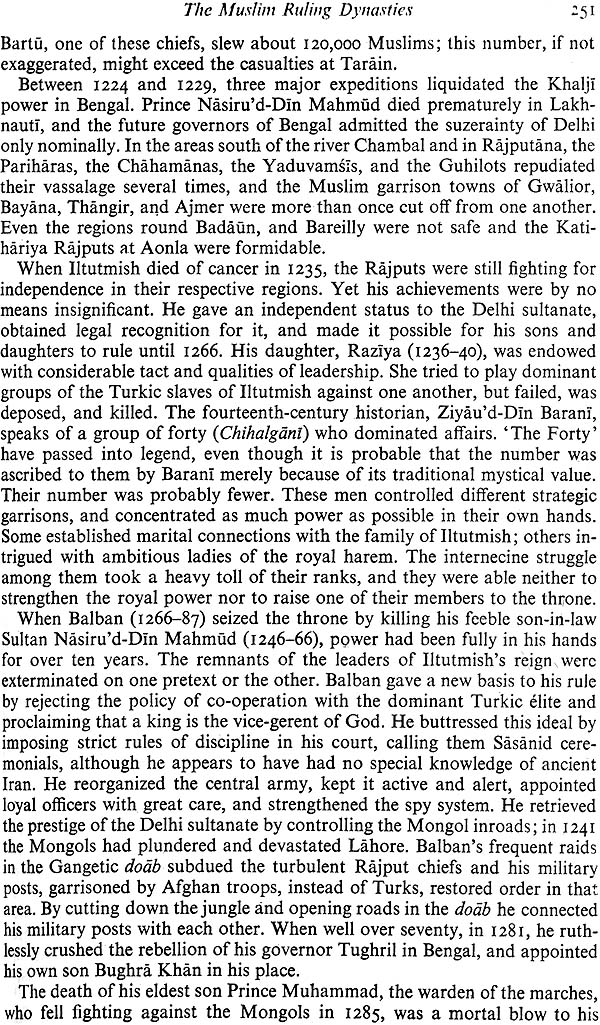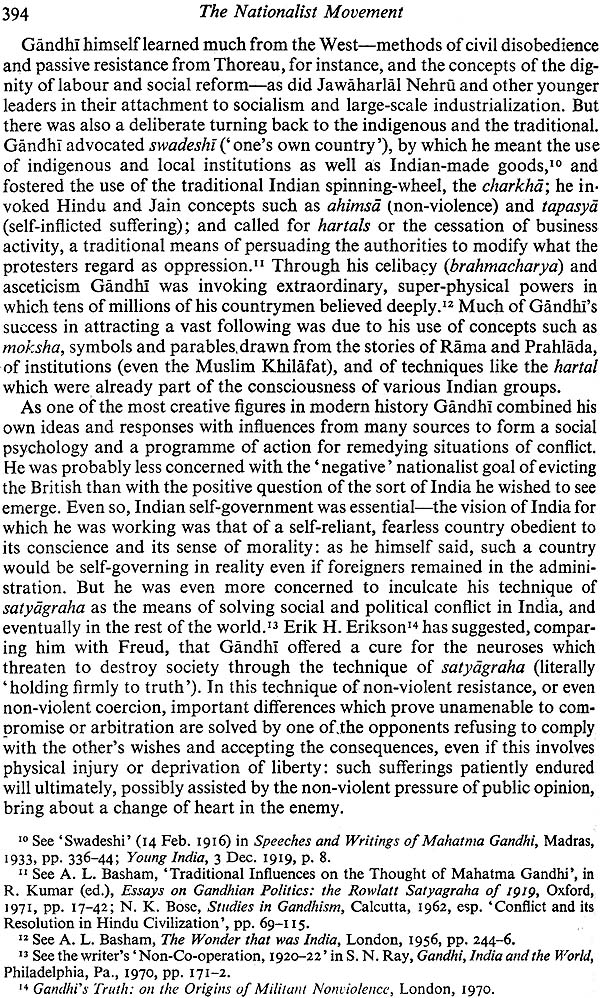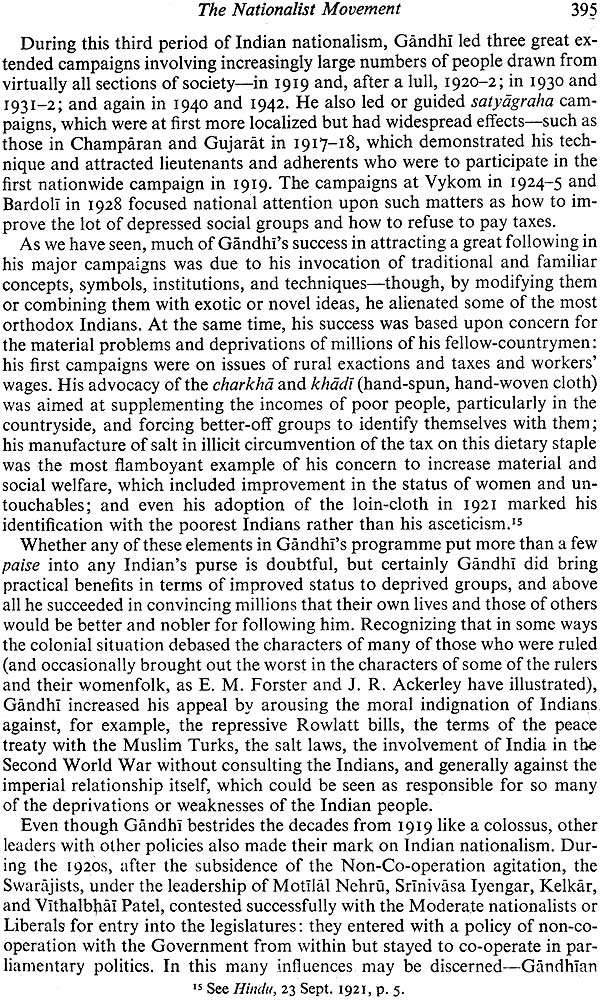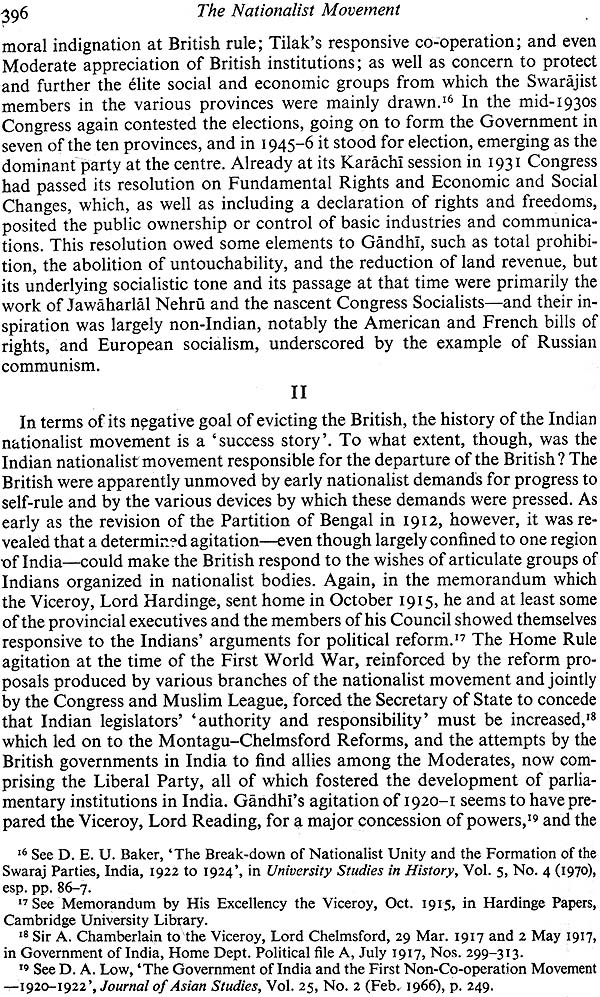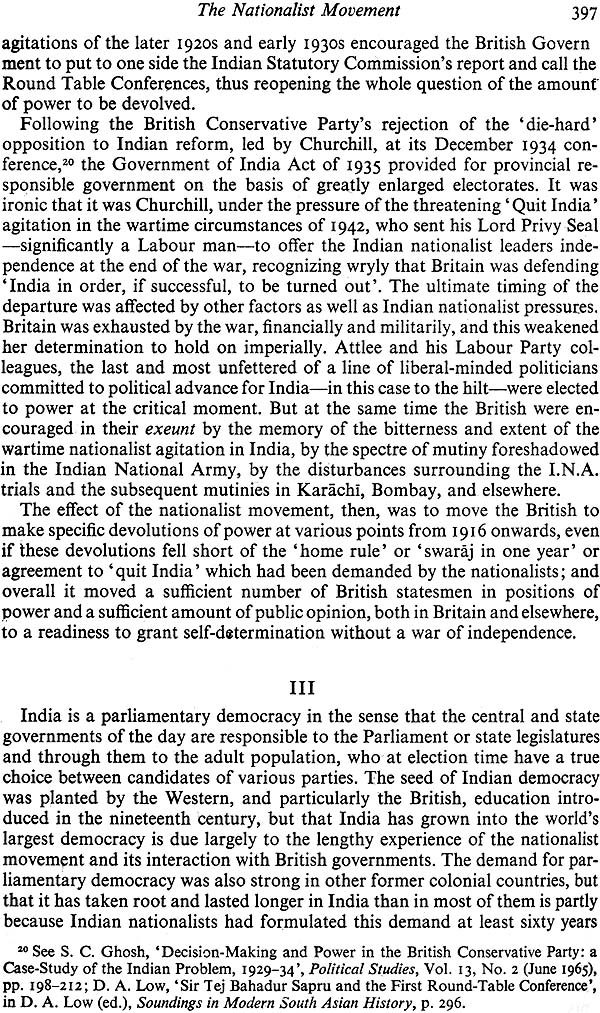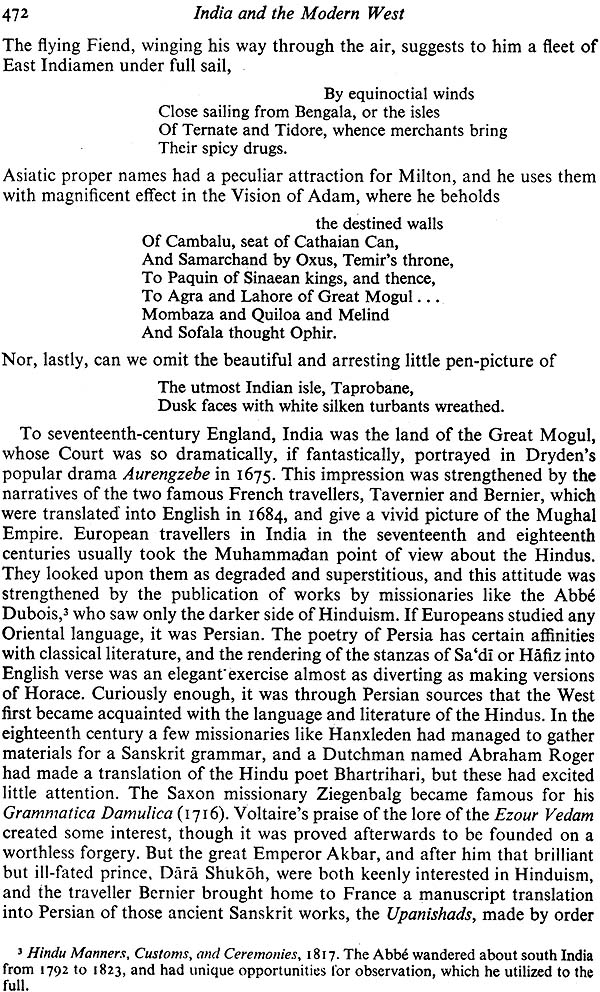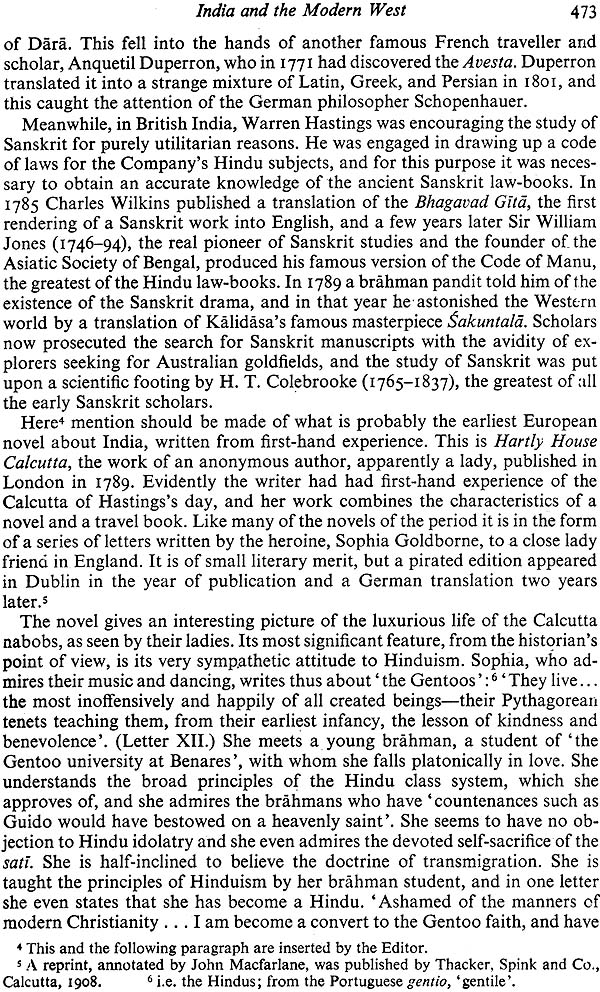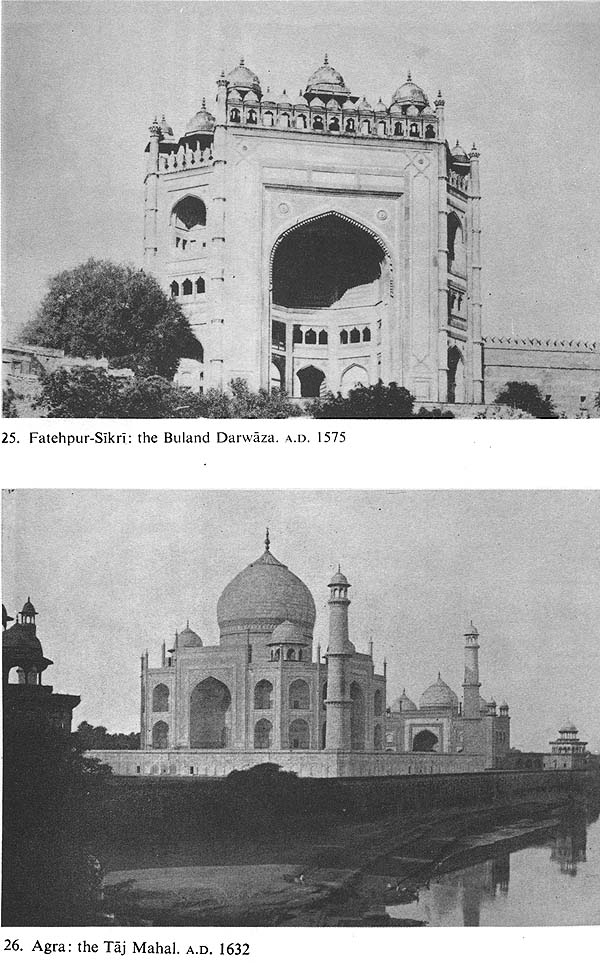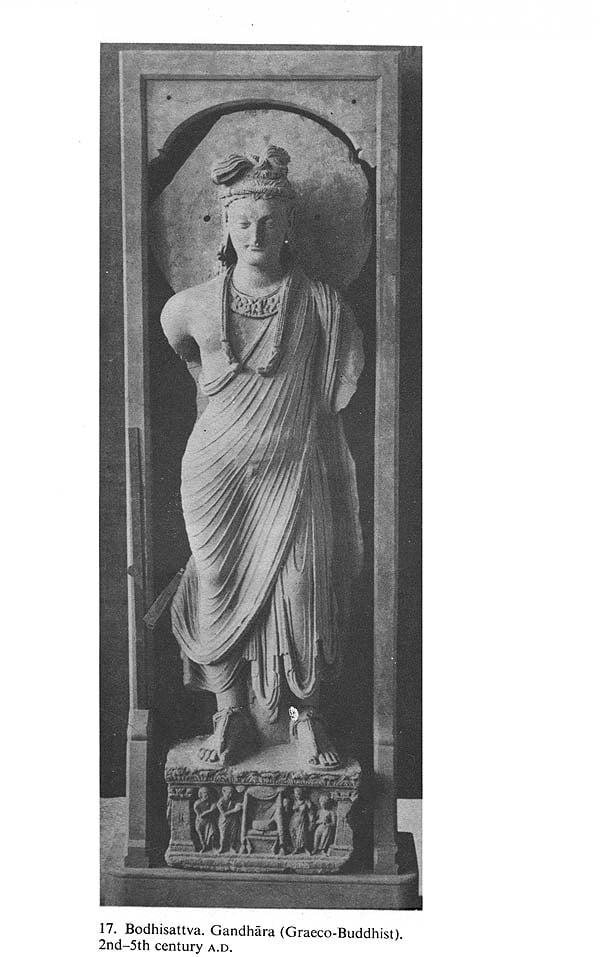
A Cultural History of India
Book Specification
| Item Code: | IDF960 |
| Author: | Edited By: A. L. BASHAM |
| Publisher: | Oxford University Press, New Delhi |
| Language: | English |
| Edition: | 2015 |
| ISBN: | 9780195639216 |
| Pages: | 640 (B & W Illus: 32, Maps: 11) |
| Cover: | Paperback |
| Other Details | 9.5 X 6.0 |
| Weight | 740 gm |
Book Description
This comprehensive survey of Indian culture, covering various aspects such as religion, philosophy, social organization, literature art, architecture, music and science, is a classic of our times. Thirty scholars from across the world, including S, RAdhakrishnan, T. Burrow, S. N. Das, and Percival Spear, engage and inform through the richly textured narrative. This volume will appeal and inform through the richly textured narrative. This volume will appeal universally to scholars and lay readers.
A.L. Basham (1914-86), one of the world’s foremost scholars of ancient Indian culture and religion, was Director of the Royal Asiatic Society of Great Britain and Ireland, President of the 28th International Congress of Orient lists, and president of the International Association of Buddhist Studies. His major works include the wonder that was India and The Origins and Development of Classical Hinduism.
‘The scholarship is impeccable..The range is huge. One can learn about everything, from Indian influence on South-East Asia to modern Bengali writers, from progress of Buddhism in China to Moghul architecture.’
…has new insights and new prescriptions to provide, new approaches to suggest.’
THE Legacy of India, edited by G. T. Garratt, appeared in 1937. Its Contributors included some of the ablest specialists of the time and several of its fifteen chapters are as valid today as they were at the time of writing. Nevertheless, the Second World War, the independence of India, and the change of attitudes since those two momentous events, have rendered some of the chapters quite out of date. Others have become obsolete as the result of the many discoveries made and new theories put forward since the war.
The need for a new edition was clear and Dr. Raghavan Iyer first drafted out a plan and approached a number of contributors some fifteen years ago. In 1968 the Clarendon Press asked me to assume responsibility for bringing the work to a conclusion, on the basis of the material collected by Dr. Iyer. I agreed to do so, and was given authority to commission authors and recast the plan of the volume in whatever way I might think fit. As is almost inevitably the case with large collaborative works, composed by contributors scattered across the world, the task took longer and proved more arduous than I had expected. But it is completed at last, and the result is offered to the reader, not without some misgiving, in the hope that he will accept it as a sincere attempt on the part of the contributors and the editor to explain India's heritage from the past, and the world's heritage from India. The original Legacy, for all its merits, contained several lacunae. In the attempt to fill these and to produce an even more comprehensive survey, it became increasingly clear that what was emerging could not be contained under the original title. It was no longer a 'Legacy', and so, not too immodestly I hope, it was decided to call the book A Cultural History of India.
While many of the chapters are the work of senior scholars with well-established international reputations I have not hesitated to enlist the help of younger and less well-known specialists, where this has seemed advisable. The very fact that contributions have been received from four of the five continents, (and one contributor now works in the fifth, Africa) is surely evidence in itself of the importance of India in the world today.
Four of the contributions to Garratt's original Legacy have been retained. The venerable Professor Radhakrishnan's sincere and well-written chapter on Hinduism survives, with some editorial additions. Similarly, with editorial changes, I have retained the chapter by the late Professor S. N. Das Gupta, whose monumental survey of Indian Philosophy is still the most authoritative and comprehensive study of the subject. The late Professor H. G. Rawlinson's sympathetic chapter on India's cultural influence on the western world remains, but it is now divided into two and is brought up to date by a German scholar who has a special study of the subject of the subject. The contribution of Martin Briggs on Indian Islamic Architecture is also kept, purged of several pages of discussion of matters which were once controversial, but are new no longer so. Other than these chapters, all the material is new.
In my editorial capacity I have made no attempt to force my numerous helpers to fit their contributions to a particular patter, beyond explaining to them at the outset that I hoped that the book would emphasize the inheritance of modern India from the past, and her many bequests to the world of the present. My main task, except in respect of the chapters inherited from the Garratt Legacy, has been in trying to impose a uniform system of transliteration, orthography, and typographical conventions, in occasionally adding brief explanatory remarks, and in abridging a few contributions which were definitely over length.
It was part of my original plan to include chapters on ‘India since Independence’ and ‘Pakistan since Independence’, which would survey the main trends in the two countries over the last twenty-five years. But I finally decided against this in view of the six of the volume, and of the fact that many aspects of the contemporary situation were covered in other chapters. In the place of theses two unwritten chapters a briefs conclusion tries to draw the many and diverse threads of this book together. If in this I have allowed myself to make value judgments, some of which may be in disagreement with the statements of certain contributors, I put my views forward with all deference, a s those of one who has had close contacts with the region of South Asia for many years, and has deep affection for the people of that region and for their culture.
Some readers may e irritated by the numerous diacritic marks to be found over the letters even of well-known Indian names. IL ktade full responsibility for any annoyance this may cause. It has long been one of many minor tasks in life to encourage the English-speaking public to pronounce India names and terms with at least an approximation to accuracy, and the attention of readers is drawn to the notes on pronunciation which immediately follow this preface.
One of the most difficult problems facing the editor of a work such as this, in the present-day context, reset in its title . When the original Legacy was published the whole of the region of South Asia, with the exception of Nepal, the foreign affairs of which like India was part of the British Empire, was clearly and unequivocally India. The region now consists of five completely independent states, of which the Republic of India is unquestionably the largest in size and population. This fact, perhaps understandably, sometimes leads to expressions of protest when the word ‘India’ is used, in certain contexts, to cover regions beyond India’s present-day frontiers. As an extreme example I remember a student from Kathmandu indingnanty declaring that his country had not received the credit that was it due because Gautama Buddha was invariably referred to as an Indian when in fact he had been a Nepalese. The endemic tension between India and Pakistan leads to similar protest, on grounds to numerous to mention. I recognize the force of national feeling, and I do not wish to give offence to citizens of the other countries of South Asia, but here inevitably ‘India’ must be understood at times in its broadest historical sense.
Let it be remembered in any case that the word India itself owes its derivation, not to India, but to Greece. Until the Muslims came to South Asia none of the inhabitants of that region ever thought of calling their country by such a name. The river Indus is known is Sanskrit as Sindhu . The Indus region most of it now Pakistan, became a satrapy of the Achaemenian empire of Iran under the name Hindus, the Indians becoming Persian h by a regular sound -shift between the two languages. The Greeks, borrowing the word from the Iranians, called the river Indos and the country through which it flowed India. It would appear that for Herodotus the Indus basin was the whole of India. At least from the time of Alexander of Macedon, and probably before him, the Greeks realized that beyond the Indus valley lay the valley of another even greater river which they called Ganges, from the Sanskrit Ganga. This latter name, incidentally, is now officially used in India, not only in Indian languages but also in English. Since it is the name by which those who dwell on its banks have known the sacred river for some 3,000 years, there seems no point in retaining the classical modification of the India word, and we have therefore adopted Ganga regularly in this book.
Later classical writers, thought heir geographical knowledge was very inaccurate, regularly applied the term India to the large land mass which extended from the Himalayas t the sea. The Arabic Hind and the Persian Hindustan had the same connotation at later date. Thus Europe and western Asia has applies the worked India to the whole of mainland South Asia, irrespective of political boundaries, for over 2,000 years. I contexts such as this one, circumlocutions like’ the Indo-Pakistan subcontinent’ are quite impossible. We are compelled to retain ‘India’, even if we go beyond the bounds of the present Indian Republic.
It remains for me to express my acknowledgements for much help and advice received in the course of my task. First I must thank Dr. Ragahavan Iyer, for collecting the first drafts of several chapters before he relinquished his editorship. I am very grateful to Professor Jm Duncan M. Derrett of first suggesting that I take up the task as well as for acting as my contact in London and for contributing an excellent chapter to the volume. I have to thank all the contributors for their generous co-operation and (in many cases for their patience; I am especially grateful to a few of them who came to my help at the last minute, and produced chapters at very short notice. A number of colleagues gave me very helpful advice on the selection of contributors and other matter of importance –I think specially of Mr. W. G. Archer, Professor J. W. De Jong, Dr. H. H. E. Loofs, and Dr. S.A.A. Rizvi. To bring this complex editorial task to a successful conclusion I have been greatly helped by the very competent professional assistance of Mr.’s Jocelyn Bergin, Secretary of the Department of Asian Civilizations, of Miss Mary Hutchinson, Departmental Research Assistant, and of the ladies of the typing pool of the Faculty of Asian Studies of the Australian National University. Dr J.C. Harle, of the Ashmolen Museum, Oxford, has given invaluable help with the illustrations. I must also thank the staff of the Clarendon Press for exemplary patience and for trusting my judgment.
Postscript. While this book has been in the press, several important political changes have taken place. The secession of East Pakistan, to become the independent state of Bangladesh occurred shortly before the final typescript was submitted, and note of this has been taken in the text. The change of the familiar name Ceylon to Sri Lanka came later, and I have not attempted to alter the text of this book accordingly. More recently the India state of Mysore has become Karnataka and several small hill-states have been detached from the former Assam. It would delay toe appearance of the book still further if I attempted to bring every reference to these regions of South Asia up to date, and I crave the reader’s indulgence for inconsistencies in this respect.
There are four main cradles of civilization, from which elements of culture have spread to other parts of the world. These are, moving from east to west, China, the Indian subcontinent, the ‘Fertile Crescent’, and the Mediterranean, especially Greece and Italy. Of these four areas Indian desires a larger share of the credit than she is usually given, because, on a minimal assessment, she has deeply affected the religious life of most of Asia and has provided very important elements fin the culture of the whole of South-East Asia, as well as extending her influence, directly and indirectly, to other parts of the world.
It has been commonly believed in the West that before the impact of European learning, science, and technology ‘the East’ changed little if at all over many centuries. The ‘wisdom of the East’, unchanging over the millennia, it was thought, preserved eternal verities which western civilization had almost forgotten. On the other hand ‘the East’ was not ready t enter into het rough and tumble of the modern world without the guidance for an indefinite period of more developed Western countries.
These ideas were no doubt held in good faith by many well-informed people of earlier generations, and there may have been a grain of truth in them from the point of view of the nineteenth century. But there is no reason to believe that the rate of change in India in earlier times was any slower than that of other parts of the world. It was only from the sixteenth century onwards, when a combination of many factors led to increasingly rapid technological and scientific advances in Europe that the myth of the changelessness of Asian began to appear.
In fact India has always steadily changing. The civilization of the Guptas was different from that of the Mauryas. and that of medival times was different again. The Muslims altered conditions considerably, and the high flowering of Indian Muslim civilization under the four great Mughals brought yet more changes. The religious life of India, for all her’ ancient wisdom’, has changed greatly over the centuries. Between the time of the early Greek philosopher sand that of St. Thomas Aquinas, Buddhism developed into a great religious movement in Indian, changed its outlook almost completely, declined, and finally sank back into the Hinduism from which it had emerged, but only after Buddhist missionaries had spread their message throughout half of Asia. The Athenian Acropolis was at least 500 years old before the first surviving stone hindu temple was built. Some of the most popular gods of Hindus. For instance, Ganesa and Hanuman, are not attested until well after the time of Christ. Certain other features of Hinduism also, for instance the cult of the divine Rama and the complex and difficult system of physical training known as hatha yoga, are centuries later than Christianity.
Yet the older strata of India’s cultural life go back far beyond anything we have in the west. The whole of the Rig Veda had been composed long before the Iliad and there is hardly anything in the Old Testament in its present form which is as old even as the latest Rig Vedic hyns. Some practices and beliefs of popular Hinduism, for instance the cults of the sacred bull and the papal tree, are as old as the prehistoric Harapa culture, and probably even older. IN fact every generation in India , for over 4,000 years, has bequeathed some-thing , if only a very little, to posterity.
No land on earth has such a long cultural continuity as India, since, though there were ore ancient civilizations, notably in Egypt and Iraq, these were intrusive cultures, until nobody remembered the Book of the Dead or he Epic of Gilgmesh, and great kings such as Ramesses II or Hammurabi were not recorded in any living tradition. Only nineteenth-century scholarship resurrected them from oblivion, and if they are now national heroes, remembered by every school-child in their respective lands, this is no thank either to the historical genius or to the retentive folk-memory of the countries concerned.
On the other hand in India the Brahman still repeats in his daily worship Vedic hymns composed over 3.000 years ago, and tradition recalls heroic chieftains and the great battles fought by them at about the same time. In respect of the length of continuous tradition China comes second to India and Greece makes a poor third. The pre-Vedic Harappa culture bequeathed to alter times sacred animals and trees, the Mother Goddess, the preoccupation with personal cleanliness, and, less certainly, other aspect s of Indian culture. From the Vedic Aryans came many of the gods, the Vedic hymns, some of the most important personal rituals of Hinduism, the patriarchal and patrilineal family system, and the horse. Late Vedic times brought the passion for speculation on ultimate causes, the quest for the Absolute, the doctrine of transmigration, the search for release from the round of rebirth, and mystical gnosis. In social life and material cultured the same period saw the crystallization of the four classes of Hindus society, the introduction of iron from western Asia, the domestication of the elephant, the development of kingdoms out of tribal chieftainships.
In the 300 following years coined money became common, and writing known in the time of the Harappa culture and later apparently forgotten, became widespread. Hererodox teachers, chief f whom was the Buddha, spread new doctrines which by passed the gods, the Vedas, and the Brahmans, and the area of civilization steadily expanded into the remote parts of the subcontinent.
Political developments over the preceding period led to the first great empire of India, that of the Mauryas, when for the first time most of the subcontinent was united under a single government .This period produced the Machiavellian system of statecraft associated with the name of the minister kauitlya, the reputed author of the famous Arthasastra. From oldest artificial caves, and the most ancient Buddhist stupas. Under Asoka Buddhism increased its influence, and was taken to Ceylon.
The 500 years between the Mauryas and the Guptas sawa tremendous developments in Indian civilization, partly due to fresh influences brought in by various invaders and traders, and partly the result of internal developments. New forms of devotional religion emerged, centering round the gods Vishnu and siva, an these led to the composition of the Bhagavadgita, now the most influential text of Hinduism. Buddhism developed a theology, the Mahayuana, which was carried to China. Schools of law appeared, codifying in written form earlier traditions. The two grate epics of India, the Mahabharata and the Ramayana, were edited in something like their present form. Courtly literature began developing out of vanished prototypes: drama, ranging from the heroic to he sentimental, and verse, wonderful in its polish and ingenuity yet often filled with deep and sincere e feeling. Logically reasoned philosophical schools emerged, as distinct from the older religious teachers, most of whose arguments were analogical. Contact with South-East Asia became closer with the spread of trade, and that region began to adopt many features of the religion and culture of India. These are only a few of the many innovations of this, perhaps the most formative period of Indian history before the nineteenth century.
The period from the rise of the Gupatas to the death of Harshavardhana can truly be called the classical period of Indian civilization. IN this age the grates sculpture of ancient India was produced, and the finest literature written, in the poems and plays of kalidasa. This was the time of the best surviving ancient Indian mural painting, typified by Ajanta. Knowledge grew also in this period. India’s most important practical a contribution to the world, the system of palace notation of numerals, with nine digits and a zero, was known by A.D.500, an led to the grate development of Indian mathematics and astronomy. THE recording of ancient legends and traditions in the Puranas began. The Mother Goddess, after centuries of neglect, l became an important object of worship again. Stone-built temples appeared throughout the land.
Between the death of Harshavardhana and the coming of Islam the ecstatic devotional religion , associated with the singing o f hymns in the common tongue, appeared in Tamilnadu, later to spread all over the subcontinent. Temples became larger and grander, with spring towers. The system of hatha yoga was developed, and tantrism with its sacra metallization of sex, spread in both Hinduism and Buddhism . In Sankara and Ramanuja Hindu religious philosophy saw its greatest teachers. Some of the finest schools of bonze-casting in the world appeared in Bengal and Tamilnad. The former region also developed a five school of miniature painting.
With the coming of Islam fresh cultural influences made themselves felt. The sultanate period saw the introduction of new styles of architecture, bringing the dome and arch. New schools of miniature painting, both Muslim and Hindu, emerged. Sufi teachers disseminated ht doctrines of Islam and helped to make the religious climate of northern India favorable to the spread of popular devotional Hinduism from the south. Paper was introduced, slowly replacing the traditional Indian writing materials-palm-leaf and birch-bark. The Urdu language began to appear as the lingua franca of northern India, and poets began to compose in the everyday languages instead o f classical Sanskrit.
The great days of the Mughal Empire witnessed the perfection of the schools of Muslim architecture an miniature painting, with the production o f such splendid buildings as the Taj Mahal at Agra. Cannon and smaller fire –arms began to be used in warfare, Europeans established trading stations at various ports, and through them especially the Portuguese, new crops were introduced into India , among them the potato, tobacco, the pineapple, and, surprisingly, the spice which nowadays s commonly thought typical of India, the chilli pepper. The sikh religion was born just as this period began, as a small devotional sect, and at about the time when the period concluded it was reborn as a martial brotherhood,, to play an important part in the confused political life of the following century.
The eighteenth century saw the break-up of the Mughal Empire and the steady expansion of the power of the British East India Company. It was a time of general cultural decline in India, but the genius of the land was still at work. The Urdu language, little used hitherto as a medium of literary expression, become the vehicle of great poetry at the decadent courts of Delhi and Lucknow; while in the Himalayan foot-hills ,at the end of the century at the petty courts of local maharajas, by some unexplainable miracle, there worked the nineteenth century the subcontinent was exposed to the full force of h western influence, and innovations are too numerous to list.
This cursory survey of the history of cultural change in India is sufficient in itself to show that, as long as civilization has existed there, the country has never been stagnant, but has steadily developed through the sages. Indian has enjoyed over 4,000 years of civilization, and every period of her history has left something to the present day.
As well as this great legacy of the human past, the people of the subcontinent have another inheritance from Mature itself-the land and its climate. We cannot understand south Asia without knowing something about what its people have received from the primeval forces which shaped the surface of the earth millions of years before man existed. In this sense perhaps India’s most important inheritance is the great chain of the Himalayas, without which the land would be little more than a desert.
As the plateau of central Asia grows warmer in the spring, the warm air rises and winds bearing heavy masses of cloud are attracted towards the high tableland from the Indian Ocean. The movement of the clouds is interrupted by the mountains, and they shed their burden of rain upon the parched, over heated land. The monsoon, beginning in June, lasts for about three months, and brings water for the whole year. Except along the coast and in a few other specially favored areas, there is little or no rain in other seasons, and thus the life of almost the whole subcontinent depends on the monsoon.
The conservation and just sharing out of the available water among the cultivators is a very important factor in the life of India. It has been one of the main concerns of Indian governments for over 2,500 years and indeed the high civilization which is discussed in the pages of this book has depended, and still largely depends, on irrigation, promoted and supervised by govern-ment, for its very existence. In the past, whenever the rains have been inadequate, there has been famine; whenever a local government has lost grip and become ineffective, irrigation has been neglected, dams have broken, canals have been choked with mud and weed, and great hardship has resulted. Thus villagers fiave learnt to co-operate independently of their rulers, by forming their own village government, under a committee of locally respected leaders, the panchayat, to care for matters of common concern such as irrigation, and to settle disputes as far as possible outside the royal courts. Orra large scale the climate has perhaps encouraged autocracy, but at the local level it has necessitated government by discussion.
Let it not be thought that the South Asian climate is one which encourages idleness or quietism. There are certainly periods in the agricultural year when little work can be done in the fields, but in a different way, in most parts of the subcontinent, the challenge of nature is just as serious as it is in northern Europe or America. The driest part of the year is also the hottest, in April and May, and it is perhaps just as difficult to sustain life in such conditions as it is in the cold northern winter. The rainy season brings problems of another kind—almost constant heavy rain, floods destroying thousands of lives, rivers changing their courses, epidemics, and stinging insects, some of which carry the germs of such diseases as malaria and elephantiasis. In the winter season, moreover, though the days are mild and sunny, the nights may be very cold, especially in Pakistan and the western part of the Ganga basin. In such times, when the midnight temperature may be below freezing-point or only a little above it, deaths from exposure still occur. Only in the tropical coastal areas of the peninsula would climatic conditions permit the survival of a considerable population without much hard work and foresight, sustained by coconuts, bananas, and the abundant fish of the Indian Ocean; and in these favoured areas the population passed the limit at which such a way of life was possible over 2,000 years ago.
The abundant bounty of tropical and sub-tropical nature has been qualified by extreme heat, extreme rainfall, and extreme dryness in different parts of the year. In fact the climate of the subcontinent tends to extremes, and possibly this too has influenced the Indian character and attitude to life, because, though one of the greatest of India's teachers counseled 'the Middle Way', succeeding generations have not always taken this course, and the extremes of rigorous asceticism and abandoned luxury have often gone hand in hand.
South of the Himalayas lie the great plains of the subcontinent, the centers from which civilization expanded in ancient times. Composed of deep silt carried down by the rivers Indus (Sind, Sindhu) and Ganga (Ganges) these plains are naturally very fertile, but for centuries they have supported a dense population, whose peasants used the most easily available form of manure, cow-dung, as fuel. Hence the fertility of the plains declined, until by the end of the last century many areas had reached a rock bottom of productivity, from which they have begun to emerge only recently, with the introduction of artificial fertilizers and the spread of knowledge of better agricultural methods. In ancient days, however, the fertility and the healthy well-fed peasantry of India were noticed by foreign travellers from the Greek Megasthenes (c. 300 B.C.) onwards.
South of the Ganga are the Vindhya Mountains and the long and beautiful River Narmada, dividing the north from the plateau region of Maharashtra, generally called the Deccan (from Sanskrit dakshina, 'south'). The region, less naturally fertile than the great plains, has been for at least 2,000 years the home of tough martial peasants who, whenever energetic leadership appeared to consolidate their clans, would take advantage of the political weakness of their neighbours to raid the wealthier lands to the north, south-east, and south.
The Deccan plateau becomes steadily less rugged and more fertile as one proceeds south and south-east. Along the eastern littoral of the peninsula are fertile riverine plains, the most important historically being that of Tamilnadu, reaching from Madras to Cape Comorin (Kanyakumarl, the extreme southern tip of India). Here, over 2,000 years ago, the Tamil people developed a fairly advanced civilization independently of the Aryan north; this region has throughout its history maintained a consciousness of its differences from the north, and has cherished its own language, while remaining part of the whole Indian cultural area; there may be an analogy between the Tamil attitude to tne northern Aryans and that of the Welsh to the English, with the difference that, while many Welshmen have English as their mother tongue, few if any Tamils have a mother tongue other than Tamil.
Yet another inheritance of India from the distant past is her people. Despite the difficult mountain passes and the wide seas barring access to India, people have been finding their way there from the days of the Old Stone Age, when small hordes of primitive men drifted into the subcontinent. These are probably the ancestors of one of India's three main racial types—the Proto-Australoid, so called because of the resemblance to the Australian Aborigines. In India the most pure Proto-Australoid type is to be found among the tribal peoples of the wilder parts of the peninsula, but Proto-Australoid features can be traced almost everywhere in the subcontinent, especially among people of low caste. The ideal type is short, dark-skinned, broad-nosed, and large-mouthed.
The next main stratum in the population of India is the Palaeo-Mediter-ranean, often loosely called Dravidian, a word not now favoured by anthropologists. These people seem to have come to south Asia from the west, not very long before the dawn of civilization in the Indus valley, and they may have contributed to the foundation of the Harappa culture. Graceful and slender, with well-chiselled features and aquiline noses, the ideal type is parti¬cularly to be found among the better-class speakers of Dravidian languages, but it also occurs everywhere in the subcontinent.
Then, in the second millennium B.C., came the Aryans, speakers of an Indo-European language which was the cousin of those of classical Europe. Some have suggested that these people came in two or more waves, the earlier in¬vaders being round-headed (brachycephalic) people of the type called Alpine or Armenoid, and the later long-headed folk, typical Caucasoid, similar in build to northern Europeans. Long before they entered India the people who called themselves Aryans had intermixed with other peoples, and their advent meant a severe cultural decline, which lasted for many centuries. Only when Aryan culture was fertilized by the indigenous culture did it begin to advance, to form the classical civilization of India. There are good arguments for the view that in the finished product non-Aryan elements are more numerous than Aryan. Now days the Caucasoid type is chiefly to be found in Pakistan, Kashmir, and the Punjab, but even here one rarely meets pure or nearly pure specimens. As one provides east and south the type becomes progressively rarer. These tree,, the Prot-Australoid, the Palaeo-Mediterranean, and the Caucasoid or Indo-European, are the most strongly represented racial types among the inhabitants of India; but they are by no means the only ones. Almost every race of Central Asia found its way to India. Turks provided the ruling families in much of what is now Pakistan long before the coming of the Muslims, who were also Turks. Mongolians of various races have been entering India over the Himalayan and north-eastern passes since long before history. The Muslim ruling classes imported numerous African slaves, who have long since merged with the general population. Persian and Arab married Indian women, and the descendants have become indistinguishable front he rest of the population. Others, such as the small but vigorous parsi community have kept their stock pure. The various European traders and conquerors have left their mark also. Along the west coast of India and Ceylon an a appreciable quantity of Portuguese blood circulates in the veins of the general population, while elsewhere in India the so-called Anglo-Indian community is the result of many marriages and liaisons between European (not only British) soldiers and traders and Indian woman.
Thus, in reading these chapters, we must remember also India’s enduring inheritance of climate ,land , and people, the basis on which her high civilization has been built, and which will remain, more or less unchanging, to condition the lives of her people in all their triumphs and vicissitudes in future centuries.
| List of Plates and Maps | xi | |
| Chronological Tables | xiii | |
| Notes on the Pronunciation of India Words | xvi | |
| List of Contributors | xix | |
| I | Introduction | 1 |
| Part one : The Ancient Hertage | ||
| II | The Indus Civilization | 11 |
| III | The Early Aaryans | 20 |
| IV | The Early Dravidians | 30 |
| V | Asokan Indian and the Gupta Age Romila Thapar | 38 |
| VI | Medieval Hindu India | 51 |
| VII | Hinduism | 60 |
| VIII | Buddhism | 83 |
| IX | Jainism | 100 |
| X | Philosophy | 111 |
| XI | Social and Political Thought and Institutions | 214 |
| XII | Science | 141 |
| XIII | Ancient and Modern Languages | 162 |
| XIV | Classical Literature | 170 |
| XV | Early Art and Architecture | 197 |
| XVI | Music | 212 |
| Part Two: The Age of Muslim Dominance | ||
| XVII | The Muslim Ruling Dynasties | 245 |
| XVIII | Medieval Hindu Devotionalsim | 266 |
| XIX | Islam in Medeval India | 281 |
| XX | Sikhism Hew Mcleod | 294 |
| XXI | Medeval Indian Literature | 303 |
| XXII | Muslim Architecture in India | 310 |
| XXIII | Medieval Indian Miniature Paintina | 326 |
| Part Three: Challenge And Response-The Coming of The West | ||
| The Portuguese | 337 | |
| XXV | The Mughals and the British | 348 |
| XXVI | Hindu Religious and Social Reform in British India | 365 |
| XXVII | Islamic Reform Movements | 383 |
| XXVIII | The Nationalist Movement | 391 |
| XXIX | Modern Literature | 406 |
| Part Four: Indian And The World Outside | ||
| XXX | Early contacts a between India and Europe | 425 |
| XXXI | Indian Influence in Ancient South East Asia | 442 |
| Appendix | 452 | |
| XXXII | Indian Influences on China | 455 |
| XXXIII | Indian and the Medieval Islamic Wolrd | 461 |
| XXXIV | India and ht Modern West | 470 |
| XXXV | Conclusion | 487 |
| Books for Further Reading | 501 | |
| Index | 519 |
